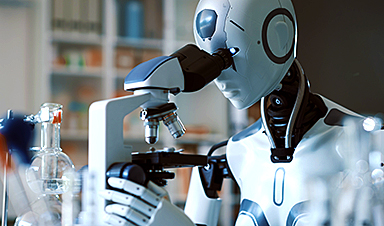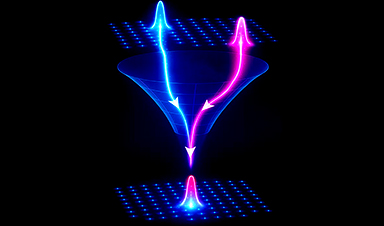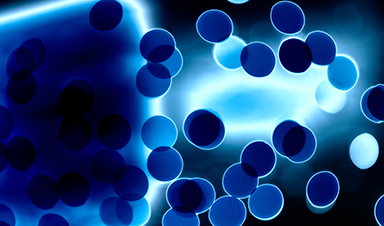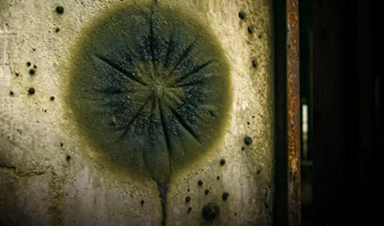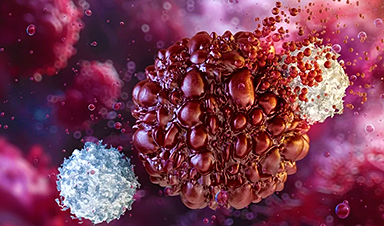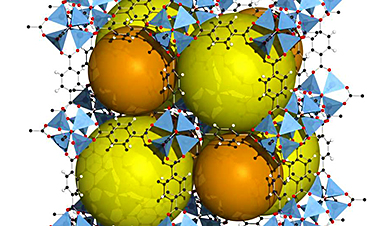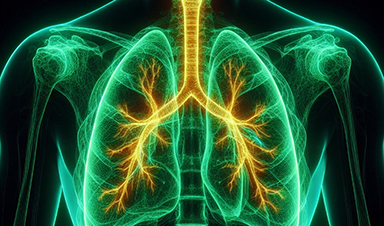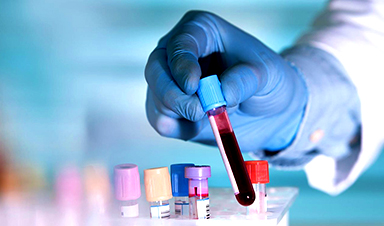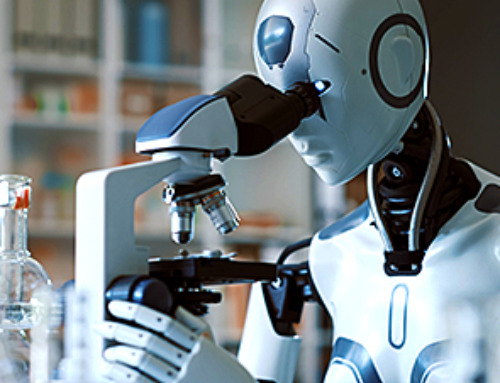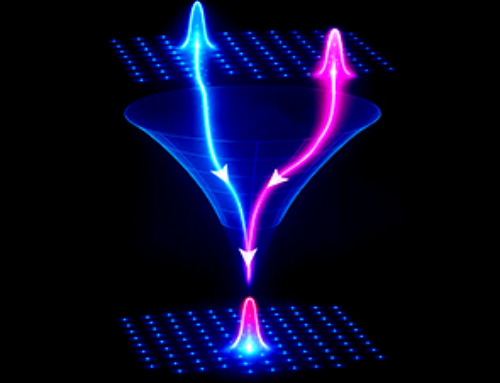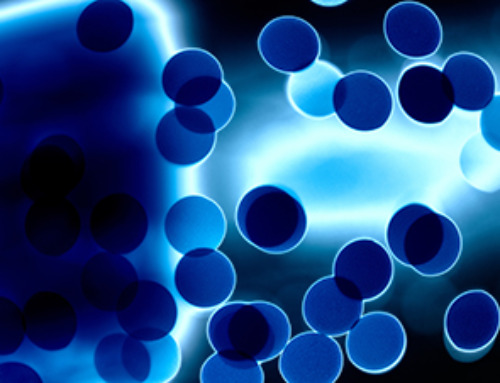ISTA physicists demonstrate that contact electrification depends on the contact history of materials.
For centuries, static electricity has intrigued and perplexed scientists. Now, researchers from the Waitukaitis group at the Institute of Science and Technology Austria (ISTA) have uncovered a crucial clue to this enduring mystery: the contact history of materials determines how they exchange charge. Their groundbreaking findings, now published in Nature, shed light on the longstanding unpredictability of contact electrification, revealing order in what was once thought to be chaos.
From the tiny jolt of touching a doorknob to styrofoam peanuts clinging to a mischievous cat’s fur, static electricity—both familiar and seemingly simple—has puzzled people since antiquity. How can this ubiquitous effect, often demonstrated to awestruck children by rubbing a balloon on their hair, still not be fully understood by scientists?
Static electricity is known by many names, but scientists prefer the term contact electrification. Contrary to what “static electricity” suggests, the phenomenon is not truly static; rather, it involves movement, as charge transfers whenever two electrically neutral materials come into contact.

“There is no escaping contact electrification; everyone experiences it. That’s why it might come off as a surprise to us that we don’t understand how exactly it happens,” says Scott Waitukaitis, Assistant Professor at the Institute of Science and Technology Austria (ISTA) who led this work together with ISTA PhD student Juan Carlos Sobarzo.
Now, the team has uncovered a key piece of the puzzle that had remained unknown for centuries: “We tested different parameters that might affect contact electrification, but none of them could soundly explain our results. That’s where we stopped to think: what if it’s contact itself that’s affecting the charging behavior? The word ‘contact’ is already in the name, yet it has been widely overlooked,” says Sobarzo.

“A total mess”
Despite the phenomenon’s ubiquity, understanding how different materials undergo contact electrification has eluded physicists and chemists for centuries. While scientists were able to describe the mechanism for metals in the 1950s, electrical insulators have proven trickier to understand—although they are the materials that exchange charge the most.
Historically, several studies have suggested that insulators could be ordered based on the sign of charge they exchange, from the most positive to the most negative. For instance, if glass charges positively to ceramic and ceramic does the same to wood, then glass (usually) charges positively to wood. Thus, glass, ceramic, and wood would form a so-called “triboelectric series.”
The problem with these triboelectric series, according to Waitukaitis, is that different researchers get different orderings, and sometimes even the same researcher does not get the same order twice when they redo their own experiment.
a total mess for a very long time: The experiments are wildly unpredictable and can sometimes seem completely random,” he says. In light of this “total mess,” physicists and material scientists could not seem to agree on any model to explain the mechanism. To make matters worse, they had to cope with the troubling fact that even identical materials, such as two balloons, exchanged charge. After all, the materials are supposed to be the same, so what determines where the charge goes?
Order arising from chaos
Waitukaitis and Sobarzo wagered that this “same-material” contact electrification could hold the keys to understanding the effect more broadly. By working with “identical” materials, they reduced the number of free variables to a minimum—they just had to find the one thing that made samples different. For their material, they chose polydimethylsiloxane (PDMS)—a clear silicone-based polymer out of which they made plastic-like blocks.
At this point, the leading hypothesis for why identical materials exchanged charge was random variations of surface properties. Frustratingly, the team’s initial results also reflected randomness and unpredictability. Not yet suspecting the samples’ contact history to play a role, they had been testing various conditions, sometimes using the same samples, completely unaware that these were evolving with each additional contact. Exploring where to take the research, they thought of testing whether identical PDMS samples would order into a triboelectric series.
“I took a set of samples I had at hand—back then I would reuse them for multiple experiments—and to my disbelief, I saw that they ordered in a series on the first try,” says Sobarzo.
Excited by this unexpected result, the team attempted to repeat the experiment with fresh samples but were quickly disappointed to see random results again.
“At this point, we could’ve thrown in the towel,” says Sobarzo. “However, I decided to try again with this same set of samples the next day. The results looked better, so I kept trying until at the fifth try the samples ordered into a perfect series.” Sobarzo had just stumbled upon the answer to why the old samples worked on the first try. Repeated contact somehow allowed the samples to evolve. “As soon as we started keeping track of the samples’ contact history, the randomness and chaos actually made perfect sense,” says Waitukaitis.

Indeed, the team found that the samples started behaving predictably after around 200 contacts and that the more ‘contacted’ sample consistently charged negatively to the one with the lower contact history. The researchers even showed that the PDMS samples could reliably form a ‘pre-designed’ triboelectric series if the number of contacts and the order of experiments were controlled.
A smoother surface
The idea that a sample’s contact history could control the way it charges had never been proposed. With this, the team explains why so many contact electrification experiments appear random and uncontrollable. Yet a question remains—how does the act of contact change the samples? So, the team pushed further, using various surface-sensitive techniques on samples before and after contact.
Among all the parameters they investigated, only one provided any hint at all: they spotted discrete changes in the materials’ surface roughness at the nanoscopic scale. More concretely, they showed that contacts smoothed the tiniest bumps on a material’s surface. How this causes contact electrification the team does not know, but as it is the only change they could detect, it is highly suggestive.
“We managed to reveal a big clue to an elusive mechanism that is so fundamental to our understanding of electricity and electrostatics and yet kept scientists puzzled for so long,” says Sobarzo. Waitukaitis concludes, barely able to hide his excitement, “We showed that the science of static electricity is not so hopeless anymore.”
Reference: “Spontaneous ordering of identical materials into a triboelectric series” by Juan Carlos Sobarzo, Felix Pertl, Daniel M. Balazs, Tommaso Costanzo, Markus Sauer, Annette Foelske, Markus Ostermann, Christian M. Pichler, Yongkang Wang, Yuki Nagata, Mischa Bonn and Scott Waitukaitis, 19 February 2025, Nature.
DOI: 10.1038/s41586-024-08530-6
This project was supported by funding from the European Research Council (ERC) Grant Agreement number 949120 under the European Union’s Horizon 2020 research and innovation program, the FFG project ‘ELSA’ under grant number 884672 as well as the European Regional Development Fund and the federal state of Lower Austria under grant number WST3-F-542638/004-2021.
News
How nanomedicine and AI are teaming up to tackle neurodegenerative diseases
When I first realized the scale of the challenge posed by neurodegenerative diseases, such as Alzheimer's, Parkinson's disease and amyotrophic lateral sclerosis (ALS), I felt simultaneously humbled and motivated. These disorders are not caused [...]
Self-Organizing Light Could Transform Computing and Communications
USC engineers have demonstrated a new kind of optical device that lets light organize its own route using the principles of thermodynamics. Instead of relying on switches or digital control, the light finds its own [...]
Groundbreaking New Way of Measuring Blood Pressure Could Save Thousands of Lives
A new method that improves the accuracy of interpreting blood pressure measurements taken at the ankle could be vital for individuals who are unable to have their blood pressure measured on the arm. A newly developed [...]
Scientist tackles key roadblock for AI in drug discovery
The drug development pipeline is a costly and lengthy process. Identifying high-quality "hit" compounds—those with high potency, selectivity, and favorable metabolic properties—at the earliest stages is important for reducing cost and accelerating the path [...]
Nanoplastics with environmental coatings can sneak past the skin’s defenses
Plastic is ubiquitous in the modern world, and it's notorious for taking a long time to completely break down in the environment - if it ever does. But even without breaking down completely, plastic [...]
Chernobyl scientists discover black fungus feeding on deadly radiation
It looks pretty sinister, but it might actually be incredibly helpful When reactor number four in Chernobyl exploded, it triggered the worst nuclear disaster in history, one which the surrounding area still has not [...]
Long COVID Is Taking A Silent Toll On Mental Health, Here’s What Experts Say
Months after recovering from COVID-19, many people continue to feel unwell. They speak of exhaustion that doesn’t fade, difficulty breathing, or an unsettling mental haze. What’s becoming increasingly clear is that recovery from the [...]
Study Delivers Cancer Drugs Directly to the Tumor Nucleus
A new peptide-based nanotube treatment sneaks chemo into drug-resistant cancer cells, providing a unique workaround to one of oncology’s toughest hurdles. CiQUS researchers have developed a novel molecular strategy that allows a chemotherapy drug to [...]
Scientists Begin $14.2 Million Project To Decode the Body’s “Hidden Sixth Sense”
An NIH-supported initiative seeks to unravel how the nervous system tracks and regulates the body’s internal organs. How does your brain recognize when it’s time to take a breath, when your blood pressure has [...]
Scientists Discover a New Form of Ice That Shouldn’t Exist
Researchers at the European XFEL and DESY are investigating unusual forms of ice that can exist at room temperature when subjected to extreme pressure. Ice comes in many forms, even when made of nothing but water [...]
Nobel-winning, tiny ‘sponge crystals’ with an astonishing amount of inner space
The 2025 Nobel Prize in chemistry was awarded to Richard Robson, Susumu Kitagawa and Omar Yaghi on Oct. 8, 2025, for the development of metal-organic frameworks, or MOFs, which are tunable crystal structures with extremely [...]
Harnessing Green-Synthesized Nanoparticles for Water Purification
A new review reveals how plant- and microbe-derived nanoparticles can power next-gen water disinfection, delivering cleaner, safer water without the environmental cost of traditional treatments. A recent review published in Nanomaterials highlights the potential of green-synthesized nanomaterials (GSNMs) in [...]
Brainstem damage found to be behind long-lasting effects of severe Covid-19
Damage to the brainstem - the brain's 'control center' - is behind long-lasting physical and psychiatric effects of severe Covid-19 infection, a study suggests. Using ultra-high-resolution scanners that can see the living brain in [...]
CT scan changes over one year predict outcomes in fibrotic lung disease
Researchers at National Jewish Health have shown that subtle increases in lung scarring, detected by an artificial intelligence-based tool on CT scans taken one year apart, are associated with disease progression and survival in [...]
AI Spots Hidden Signs of Disease Before Symptoms Appear
Researchers suggest that examining the inner workings of cells more closely could help physicians detect diseases earlier and more accurately match patients with effective therapies. Researchers at McGill University have created an artificial intelligence tool capable of uncovering [...]
Breakthrough Blood Test Detects Head and Neck Cancer up to 10 Years Before Symptoms
Mass General Brigham’s HPV-DeepSeek test enables much earlier cancer detection through a blood sample, creating a new opportunity for screening HPV-related head and neck cancers. Human papillomavirus (HPV) is responsible for about 70% of [...]

